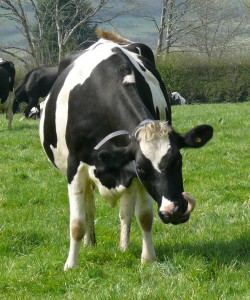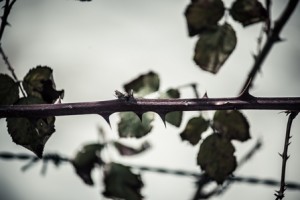Cattle Diseases
Wooden Tongue in Cattle
Also known as: Actinobacillosis
Wooden tongue (also known as Actinobacillosis) is a well-defined disease of the soft tissues of the mouth region in adult cattle. It is caused by Actinobacillus lignieresii, part of the normal bacterial flora of the upper digestive tract. The bacteria usually invade the skin through a wound or minor trauma caused by sticks, cereal awns or similar.
The disease is fairly acute, with swelling in the affected part, under the jaw and in the regional lymph nodes. The clinical symptoms are excess salivation, difficult mastication and inappetence. The condition is rarely seen as an outbreak in several animals simultaneously or but mostly as an individual case, often in association with a diet change (Campbell et al., 1975; Melendez et al., 1999; Borsberry, 2002; Dhand et al., 2003).
In cattle, ‘wooden tongue’ is the most commonly recognised, acute presentation of actinobacillosis, but the bacteria can affect soft tissues anywhere in the gastrointestinal tract (including the rumen and reticulum) and may present as a chronic condition of up to six months duration. Additionally, cutaneous actinobacillosis has been reported (Milne et al., 2001; Holzhauer and Roumen, 2002) where it is important to differentiate this condition from cutaneous lymphosarcoma.
Control and Prevention of Wooden Tongue
Although it may not be possible to avoid rough grazing, the vegetation in these situations present a risk. Likewise soil-contaminated silage, and “weedy” hay/haylage or straw for cattle feed should be avoided so as to prevent the risk of trauma to mucosal membranes in the mouth.
In the case of an isolated incident in an individual animal the best approach to prevention and control is to isolate and treat the animal at the first sign of symptoms. The animal should not be brought back into the main herd until all symptoms have disappeared as they are a potential source of infection to the rest of the herd.
In an outbreak, it is important to identify the causative factors to the predisposing lacerations in the mouths of the affected animals. This is likely to be a feed source that, once identified, should be removed. Again, isolation of affected animals and effective treatment early are the best control measures to prevent further spread. If there is an outbreak of cutaneous actinobacillosis, rough objects in the environment (such as feed barriers) should be removed or modified to prevent skin abrasions allowing bacterial entry.
As the causative bacteria do not survive more than 5 days in the environment and are present in the mouths of healthy cattle, the removal of the predisposing feed source is adequate to control the disease within a herd. If the problem persists, it is important to look for further sources of predisposing factors and eliminate them.
Treating Wooden Tongue
Treatment of wooden tongue is usually successful if started early. However, if treatment of classic wooden tongue is started more than two weeks after the first symptoms and the animal has lost a lot of condition, the treatment is less likely to be successful and humane slaughter should be considered. However, treatment of cutaneous actinobacillosis has been successful even in cases of long standing (up to 6 months) infection (Milne et al., 2001).
A vet should always be involved if treatment for wooden tongue is attempted. Antibiotics are effective and should be the treatment of choice for this condition. Treatment with penicillin and streptomycin combinations have been successful, but may need to be continued for 2-3 weeks duration for complete resolution of long standing cutaneous disease (Milne et al., 2001; Dhand et al., 2002; Holzhauer and Roumen, 2002). At least in the initial phase non-steroidal anti-inflammatory drugs should also be given to relieve the pain.
Wooden Tongue and Welfare
Classic wooden tongue is painful and distressing for the animal. Early examination of any symptoms indicating excess salivation and difficulty in mastication is important to enable early treatment and minimal suffering.
Removal of predisposing feed or grazing is also important from the animal welfare point of view, in order to prevent further cases.
Good Practice based on Current Knowledge
When dealing with individual animals with wooden tongue, or with outbreaks of the disease, it is good practice to:
- Examine early any animals with “mouth” symptoms (excess salivation, difficulty in mastication etc.) and contact a vet as soon as the condition is suspected.
- Isolate the animal and initiate a course of treatment immediately for successful results.
- Always attempt to identify the predisposing factor (feed or grazing) and eliminate it immediately, even when only one animal is affected


 American English
American English



Comments are closed.